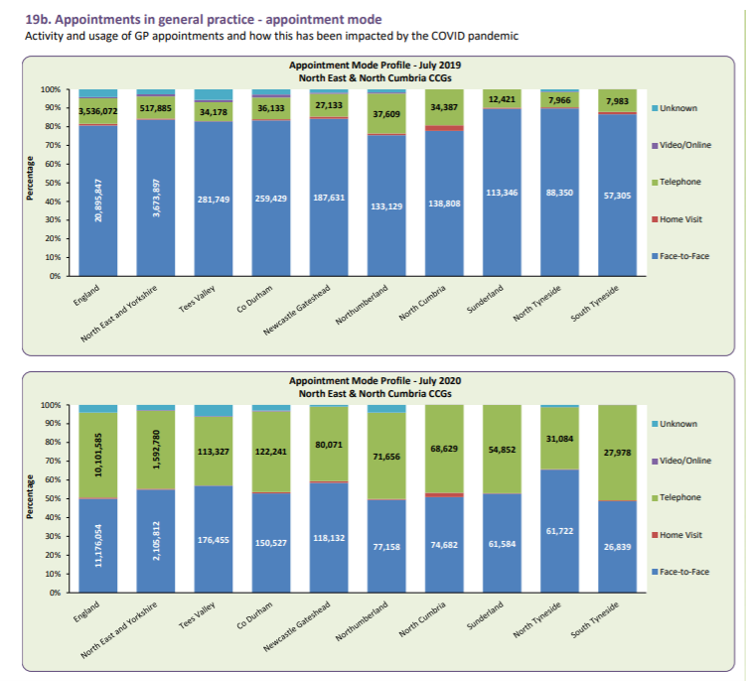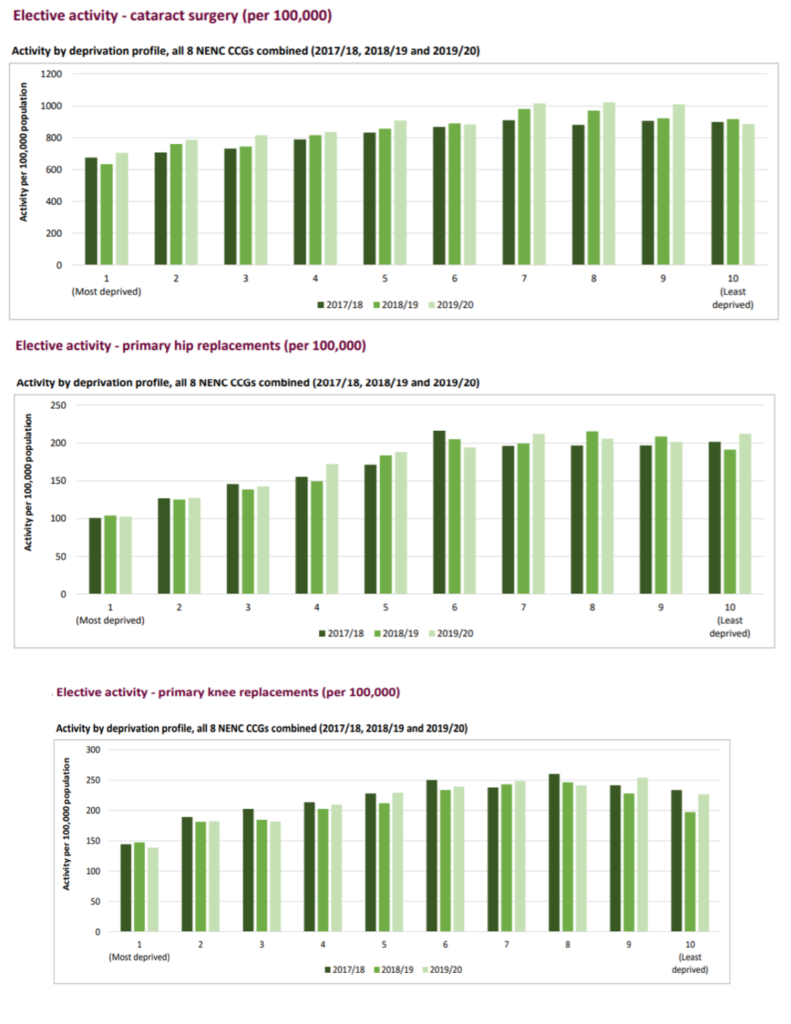Using data to drive COVID-19 recovery plans
12th April 2021
The COVID-19 pandemic has resulted in a major shock to health and social care services and some important trends are beginning to emerge, in both predictable and unexpected ways. In this blog, Dr Andrea Brown, AHSN NENC Measurement Programme Lead, gives an update on our recently published surveillance reports which highlight the impact of COVID-19 on services across the North East and North Cumbria.
For the last 5 years a Population Health and Healthcare Surveillance report has been produced annually by NEQOS for the AHSN NENC with a view to providing important insights into the health status of the region and its healthcare system.
During the COVID-19 pandemic we have harnessed this regional resource to capture some of the trends that were emerging. A key set of metrics was identified, which linked to the impact of COVID-19 on activity and services and for which timely and relevant data is available.
The aim was to support organisations by providing them with a better understanding of the impact of the pandemic across the North East and North Cumbria region, to identify areas of existing health inequalities in the population and report unwarranted variation in activity.
Focus of the reports
The work has resulted in a set of reports, based upon the NEQOS Surveillance report, and these have been produced on behalf of the whole system in the North East and North Cumbria (NENC).
The first report focuses on metrics which report delays in presentation/ access to health services (primary care, acute and mental health), impact on screening, diagnostic and immunisation programmes, impact on healthy lifestyles and coping behaviours, and NHS staff sickness absence.
The second report relates to healthcare utilisation, taking hospital activity-based information from A&E, outpatient and inpatient settings. Simple activity rates (activity reported per head of population) by CCG and activity by deprivation decile for the North East and North Cumbria are shown for three financial years, and an activity trend over time from April 2017 to Jul 2020 demonstrates the impact of COVID-19 on activity.
An appendix to the second report has also been created, containing directly standardised activity rates by CCG for three financial years and an update to the activity trend at regional level to the end of September 2020. This approach improves the ability to compare rates for different areas by accounting for differences in the age structures of the populations being compared.
What we’ve learnt
Some of the key findings include:
- In April 2020 a reduction in emergency admissions was briefly observed for a number of reasons, including myocardial infarction, respiratory disease, alcohol-related and violence-related admissions.
- The main appointment mode in general practice has shifted from face-to-face to telephone calls, with low reported use of online or video consultations.

- The diagnosis rate for dementia in those aged 65 years and over in the NENC has dropped substantially since April 2020.
- The observed rate of excess weight in adults in NENC is significantly higher than England and this is also the case for children in nine of the NENC local authorities.
- No change in activity was observed for some conditions such as for stroke and fractured neck of femur, and for elective surgery such as hip and knee replacements all activity ceased for at least 2-3 months.
- Hospital activity significantly associated with deprivation includes emergency admissions for respiratory disease (excluding COVID), for violence and for injuries due to falls, elective and emergency activity directly attributable to obesity, and A&E attendances.
- Hip and knee replacements and cataract operations are more common in those patients who are least deprived.

The findings can be used to identify existing inequalities in the region, which vary by condition, and which need to be addressed to avoid further exacerbation of these issues.
The reports could also support regional (ICS) and organisation-specific planning and restoration of services and the programme to resume routine healthcare services as the pandemic evolves.
Taking the findings forward
The reports have been shared with colleagues across the North East and North Cumbria and the findings are contributing to wider discussions and understanding of the impact of COVID-19 on health inequalities across the region.
Going forward, the key metrics included in the reports to date can be investigated in more detail, (such as at CCG, Primary Care Network) or hospital Trust level or using other deprivation or demographic measures.
An area of focus in future could be to investigate the concern that the closure, pausing or non-use of healthcare services and interventions has disproportionately affected the most deprived families with young children in the NENC.
Additional metrics can be added based on emerging evidence and themes, including an exploration of key vulnerable groups across the region based on recently published models, information relating to protected characteristics and disease prevalence, and identification of areas of unmet need.
Find out more about our work with NEQOS and access previous reports on the AHSN NENC Measurement Programme Page.
